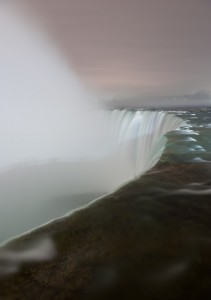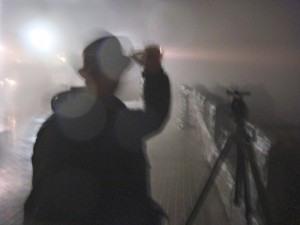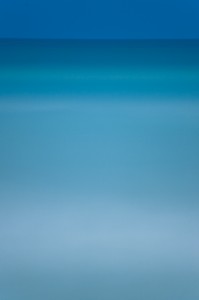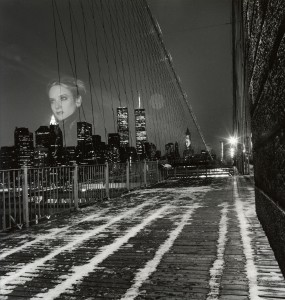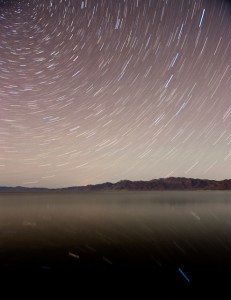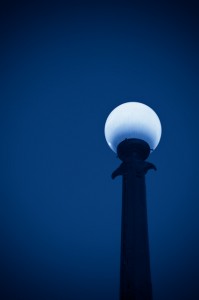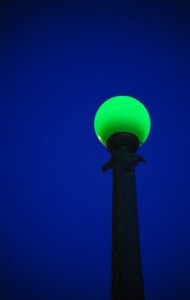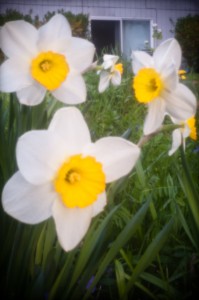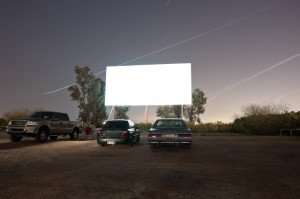 Galleries and Museums are an invaluable source of inspiration. It was on one of my first visits to the Fraenkel Gallery in San Francisco that I was introduced to Hiroshi Sugimoto’s work. I was awestruck when I saw the small 8×10 image of the old movie theater at Radio City Music Hall hanging on their wall in their back room. The movie screen was burning bright white and subtly lit up the entire theater. As I studied it more I saw ghosts of a few people sitting in seats. I was enthralled.
Galleries and Museums are an invaluable source of inspiration. It was on one of my first visits to the Fraenkel Gallery in San Francisco that I was introduced to Hiroshi Sugimoto’s work. I was awestruck when I saw the small 8×10 image of the old movie theater at Radio City Music Hall hanging on their wall in their back room. The movie screen was burning bright white and subtly lit up the entire theater. As I studied it more I saw ghosts of a few people sitting in seats. I was enthralled.
Sugimoto explains: “I’m a habitual self-interlocutor. Around the time I started photographing at the Natural History Museum, one evening I had a near-hallucinatory vision. The question-and-answer session that led up to this vision went something like this: Suppose you shoot a
whole movie in a single frame? And the answer: You get a shining screen. Immediately I sprang into action, experimenting toward realizing this vision. Dressed up as a tourist, I walked into a cheap cinema in the East Village with a large-format camera. As soon as the movie started, I fixed the shutter at a wide-open aperture, and two hours later when the movie finished, I clicked the shutter closed. That evening, I developed the film, and the vision exploded behind my eyes.”
At the time Radio City Music Hall was the only image of his hanging at the Fraenkel. But his series on Theaters lasted from 1975-2001 and took a nice turn when he incorporated Drive-Ins.
Let’s just step back and think about this for a moment. Large format camera, probably an 8×10, that he exposes for the entirety of the movie; capturing all the millions of film images on his single frame. The essence of the movie is white light which is time itself exposed.
With Drive-Ins and classic movie houses all but extinct in America, these images truly capture the spirit of a fading era. It is as if the white screen is revealing all the movies and memories the theater has experienced. The Drive-In shots added extra depth to time-exposed as airplanes and star trails would permanently incorporate themselves to the image.
When I found myself in Scottsdale, Arizona with a free night, I remembered the last time I was here I went to the Drive-In. A quick check on the web revealed the Scottsdale 6 was still in existence! It featured not one, but 6 different screens to choose from and is open year round. I packed two tripods and cameras, one film and one digital, to see what I could capture. It was jam packed at the Scottsdale 6 on a Saturday night, at least 50 cars at each screen. We eased our way to the middle of the Shutter Island screen, second row. I set up both tripods low and directly in front of the car so as not to interfere with anyone else’s vision. A truck load of teenagers next to us must have thought I was recording a boot leg version! I set up my Mamiya 7 to expose for the entirety of the film but came to the conclusion that digital capture would really max out with a 30 minute exposure. Add 30 minutes of in-camera noise reduction which gave me two shots to make some magic happen.
You can see the airplanes come and go, or circle around on the right; star trails shoot straight up on the left. Why is there one person, yet three cars? Cars were turning on and off to recharge their batteries throughout the film and their headlights briefly lit up the foreground giving more depth to the image.
It was very exciting to capture this amount of time in one exposure. Often with long exposures and night photography, the camera will reveal much more than our eyes can see.
It is this unexpected certainty of knowing some of what will happen during the exposure- but how much of it can we control?
Let go, and let the visions explode behind your eyes.
